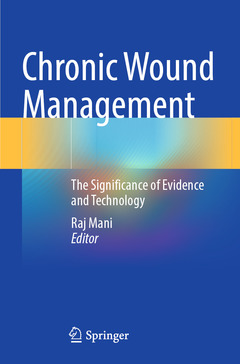Chronic Wound Management, 2023 The Significance of Evidence and Technology
Coordonnateur : Mani Raj

Raj Mani has substantial experience in research and clinical management of chronic wounds; his early work was focused on perfusion and tissue oxygenation which contributed initially to the diagnosis and subsequently to the management of wounds. This work interfaced first with developments in other centers and then with the Cochrane Wounds Group, which led to the establishment of a sound literature-base to mark the start of evidence based wound management. In recent years, he with international peers drew up guidelines for optimizing the use of technology in wound management. This book will address existing gaps in management and discuss probable causes and offer remedies for such gaps.
Dr Mani has contributed to the advancement of wound management through publications in journals, book chapters and books: Raj also initiated the publication of a journal - the International Journal of Lower Extremity Wounds (IJLEW) - of which he was the Editor-in-Chief till 2018. IJLEW whichwas followed by another couple of journals (also from the UK) and books in this field formed a platform from which better clinical management and research from practice developed. This benefited practitioners (Tissue Viability Nurses, Podiatrists, doctors-in-training) as well as Specialists.
Dr Mani worked mostly from the UK though his contributions have been recognized in Asia including China as well as in Europe and USA (through activities of professional societies.
Date de parution : 04-2024
Ouvrage de 313 p.
15.5x23.5 cm
Date de parution : 04-2023
Ouvrage de 313 p.
15.5x23.5 cm



